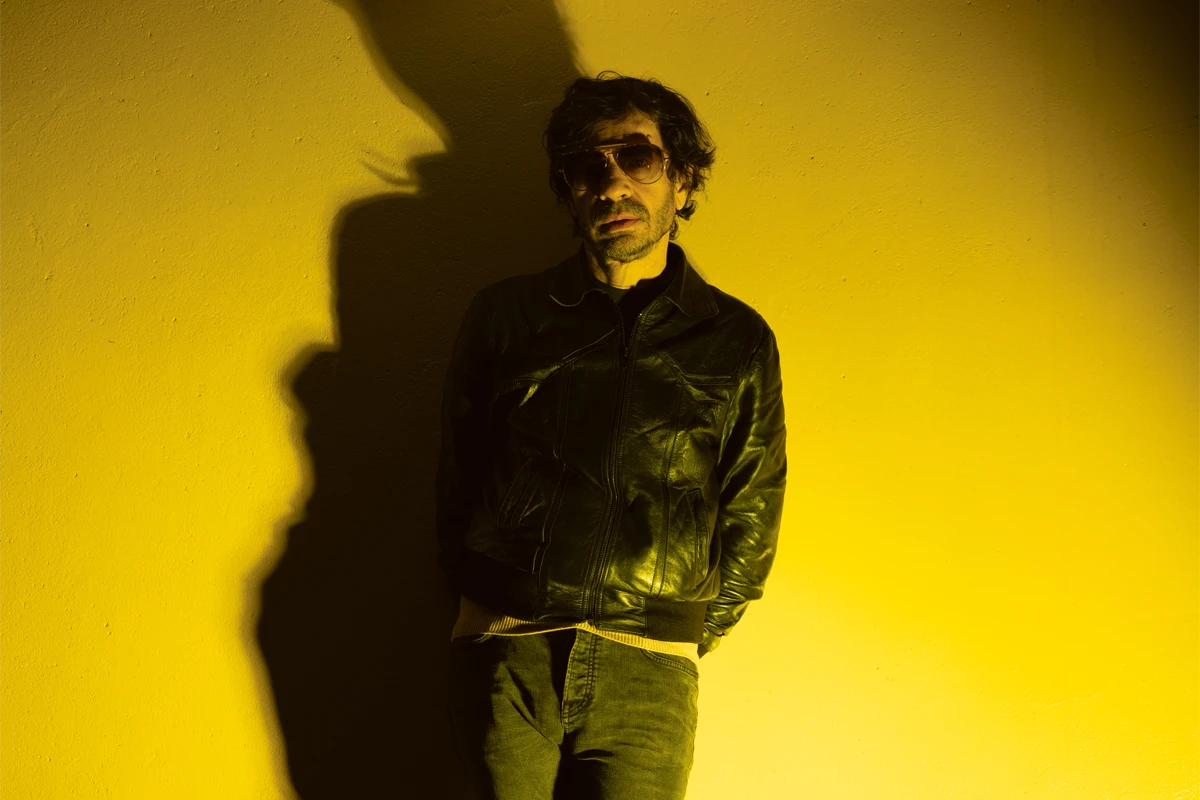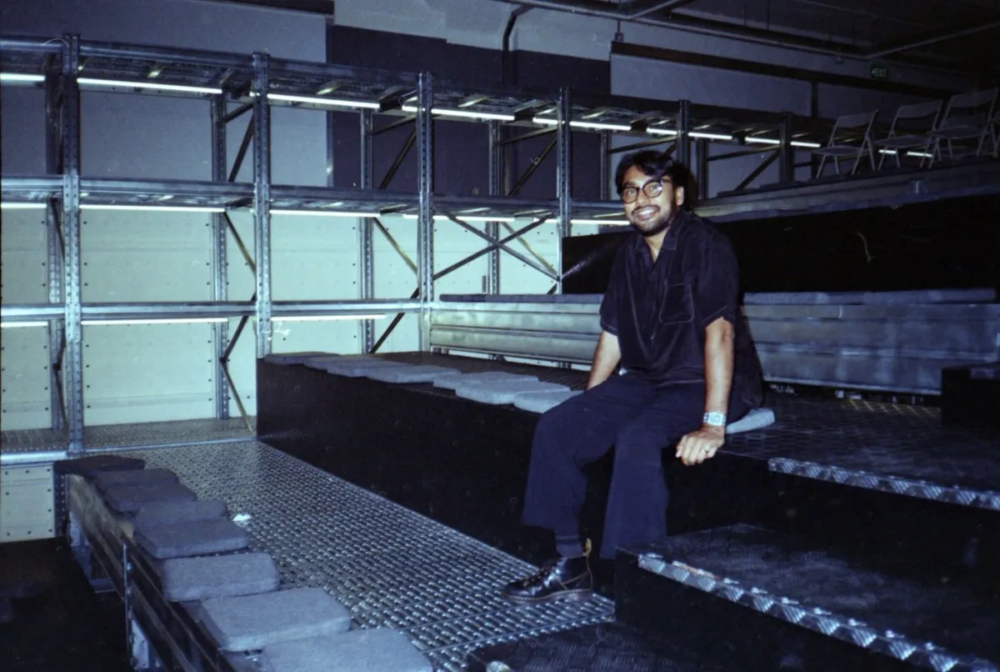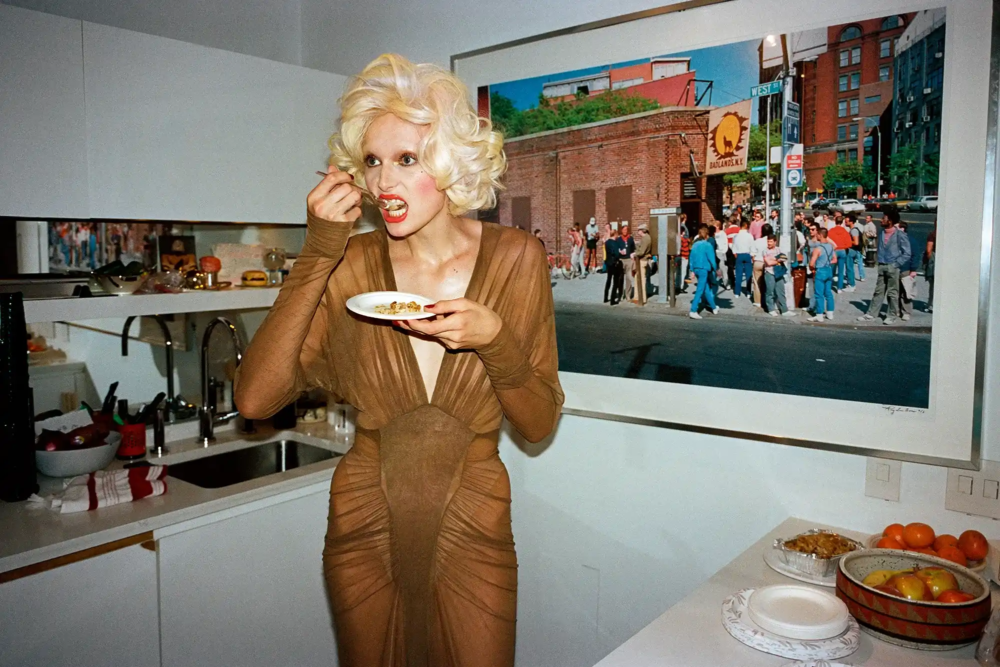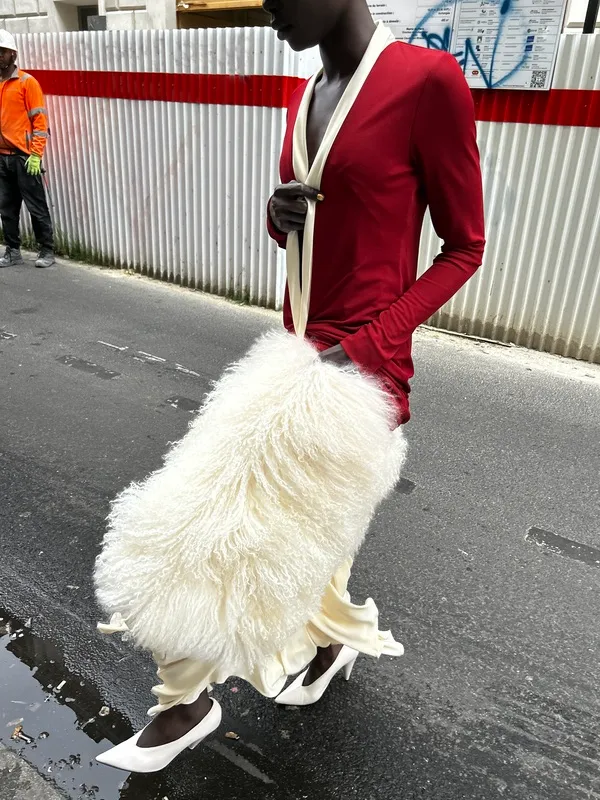
Olivier Zahm: A Manifesto for the Independent Publishing Industry
An Interview to Olivier Zahm, Editor in Chief and co-founder of Purple Magazine, taken by Carlo Mazzoni, Editor in Chief of Lampoon. Independency: being creative today is not enough
Olivier Zahm, the interview: first, I only choose fashion brands I love to work with
Carlo Mazzoni: Purple Magazine is a reference for the publishing industry—an art and fashion publication you co-founded in 1992. Lampoon is a cultural magazine, turning 10 years old in 2025. The title of this anniversary issue is Independence.
Olivier Zahm: Independence. It means simply being independent from a media group and from external investors who seek mainly profitability. Profitability is always a challenge for an independent magazine. It doesn’t work like that. Media groups and digital corporations dominate the mass media landscape, shaping the narratives, values, and aesthetics that reach the public. Their control results in a homogenized and boring aesthetic that prioritizes profit, conformity, and consumerism over creativity, independent thought, and artistic experimentation. Of course, Purple depends on advertising and brand collaborations, which clearly means I’m only partially free. First, I only choose fashion brands I love to work with and feature in the magazine’s advertisements from Saint Laurent to Gucci or Comme des Garçons. Second, I like the definition of the French philosopher Jean-Paul Sartre (my father was his personal secretary for a time): “Freedom is not about being able to do what we want, but about wanting what we can do.” The freedom of Purple depends on the financial situation we create for ourselves. We reinvest in the next issue all the money we earn from advertising and brand collaborations from the previous issue into the production, printing, and distribution of the magazine. It has been this way since the very beginning. No profit – but I refuse to lose money. By freedom, I mean the ability to push, develop, and discover what is relevant today—what is new and what offers new possibilities for creative minds, idealists, dreamers who seek freedom. Purple must protect its independence because we are small companies facing gigantic fashion corporations and mega art galleries or art institutions with massive press offices and regulation of the information. One day, I will finally write a manifesto defining what real independent press is and the rules brands or art institutions should follow when working with us. It’s a project I have in mind—to write a manifesto that advertisers and brands should respect if they collaborate with independent press. We should involve magazines like yours, Re-Edition, Fantastic Man, Pop, Self Service, 032C, November, Document, Interview, Domus, Pin Up, and more. My dream is that all interesting independent publications in culture, art, and fashion will sign this text and present it to the brands we work with.
I never share the covers in advance – If you lack artistic sensibility, I refuse any interference.
Carlo Mazzoni: Do you feel independent in your daily operations?
Olivier Zahm: To be honest with you, yes. Even in the fashion world. After more than three decades of publishing a magazine, I have gained respect of brands I collaborate with—from Gucci to Chanel, from young designers to major institutions like Vuitton or Dior. It has been a long journey—thirty-three years of work. For example, I never share the cover or the layout with a talent, their agent, or a brand. If they work with Purple, they cannot see the chosen cover image or layout before printing. This benefits both sides: they will be surprised by the result, pushed into new directions and interpretations, and Purple will try to be as creative and innovative as possible. Of course, there is no guarantee of success, but this is a necessary condition for it. Looking around, I am one of the few magazines that still does this—many magazines now share covers and layouts in advance.
Carlo Mazzoni: Does this ever cause problems?
Olivier Zahm: Recently, we shot the American actor Margaret Qualley, Chanel’s ambassador. Chanel told me, “Olivier, we signed a contract with Margaret—you have to show her the cover and the pictures.” Luckily, I have known Margaret since she started, and we are friends, so I was able to have a direct dialogue with her about the images. When you can talk directly with the talent, it’s fine—but not with agents or brands, who may have a very different point of view on the selected pictures and layout, opening a Pandora’s box of endless changes and compromises. In the last issue, The Magic Issue, we featured Isabelle Huppert, who is Balenciaga’s ambassador. She has strong opinions about how she wants to be photographed. I knew this from previous shoots and respected it because she has great taste. It was a Balenciaga story shot by Juergen Teller. With high-profile models or “usual” celebrities who lack artistic sensibility, I refuse any interference.
Independence extends far beyond the fashion system
Carlo Mazzoni: What is independence beyond fashion imagery?
Olivier Zahm: Independence is the reason why I still publish a magazine like Purple. It extends far beyond the fashion system which increasingly controls the work of photographers and stylists through subtle pressures leading to self-censorship. Independence means expressing an alternative point of view, a contemporary vision, an avant-garde dream. To me, being creative today is not enough. Independence means adopting a pluralist approach—mixing fashion, art, avant-garde dance, philosophy, cognitive sciences, theater, architecture, poetry, psychoanalysis, music, sexuality, magic, anthropology, photography, politics, ecology, shamanism, cosmology… you name it. There are no limits to experimentation and discovery if you are independent. It’s not about reproducing press releases but about editorial free and wild exploration. The idea of an independent publication is deeply optimistic—it’s about pushing the limits of art, fashion, and culture. Not because pushing boundaries is valuable, but because we dream of something different for this world. We still believe we can propose new forms of freedom, new ways of living, new subjectivities. I remain faithful to the French philosophers Gilles Deleuze and Félix Guattari, my mentors. An independent magazine explores all facets of the present, finding new directions and possibilities—not just for art and fashion, but for everyday life and everyone. Simply put, look around—everything is falling apart. The world is spiraling toward disaster.
An independent magazine: artistic opposition, positive optimism, alternative vision
Carlo Mazzoni: Is the idea of independence essentially political?
Olivier Zahm: Independence is both an aesthetic and political ambition. I love this interview with the French writer Marguerite Duras in Le Matin from June 1986. She said: “Now, we could almost teach children in schools how the planet is dying—not as a possibility, but as the story of the future. We would tell them about the fires, the blazes, the melting that humans ignited but couldn’t stop. That’s just how it is—there are some kinds of fires that can no longer be extinguished. Capitalism made its choice: better this than losing its reign.” That is where we are now. This is not about alarmist prophecies. From the fires in Los Angeles to those in the Amazon, all while countless wars rage across the planet. The reason of still doing an independent magazine, then, is artistic opposition, positive optimism, an alternative vision. It is rooted in the belief that only artists—whether they are scientists, painters, athletes, musicians, urban planners, or magicians—can create anti-models, new ways of living and dreaming for the future. Independence is intrinsically linked to art—if by art we mean something beyond today’s politically correct focus on identity defense and representation. It’s about more than that—it’s about inventing new ways of life, experimenting with the present. This is not about delivering a political message but about cultivating a proliferation of alternative ideas and visual expressions against mass ideology. That, to me, is the mission of an independent magazine. I still seek alternatives and radicality
Carlo Mazzoni: Independence means standing by yourself. Have you ever felt alone out there, alone by yourself? I have that feeling.
Olivier Zahm: Sometimes, yes. But when I look around and see that Purple Magazine is the best-selling biannual magazine (according to distributors), when I see the younger generation reading, collecting, keeping it, and engaging with it on social media, I feel confident that what I do has a true raison d’être. We are no longer the underground publication we were in the Nineties, refusing to collaborate with the system. Over time, Purple has become an art and fashion institution, but the original spirit remains—the determination is as fresh as ever. Running an independent magazine is even more important today, in 2025, in the middle of a digitalized world, intoxicated by social media, than it was when we started in 1992. I’m still rebellious. I still seek alternatives and radicality. We must constantly question what art, fashion, ecology, politics, and sexuality are, in order to preserve freedom. We stay connected with the underground. There is no culture without subculture; there is no pop culture without underground culture. In a way, like in 1992, Purple is still anti-fashion, anti-architecture, anti-art, and anti-ecology… because all of these have largely been instrumentalized by the dominant ideology, which is based on profit, consumerism and the destruction of true life, real experience and nature.
Carlo Mazzoni: What do you mean by anti-ecology?
Olivier Zahm: I question what we call ecology because many so-called ecological solutions are just a continuation of capitalism’s destructive agenda in a new consumerist form. Ecology that doesn’t challenge the dominant capitalist economic model but merely adapts to it is greenwashing—a marketing tool for new products wrapped in a “good conscience.” I don’t accept anything I haven’t questioned. Running a magazine means creating a platform for questions, not answers. For example, there is no real ecological benefit in buying an electric car. If you truly care about nature, preservation, and reducing carbon emissions, you don’t buy an electric car—you simply don’t buy a car at all. Why? Because electricity is still primarily produced by coal power plants. You’re just burning coal instead of oil. Additionally, the carbon emissions from manufacturing an EV are about fifty per cent higher than those of a comparable gasoline vehicle, mainly due to battery production. The “break-even” point—when an EV’s total emissions become lower than a gasoline car’s—can take three to five years. Is that ecological, especially if you replace your car every three years? The best way to reduce carbon emissions from your car? Keep your old car, repair it, and use it less.
Carlo Mazzoni: What is an alternative lifestyle?
Olivier Zahm: It’s not just about your furniture, fashion, or summer vacation. It’s about integrating your way of life into the world in the most positive, least destructive, and most respectful and sexy way. It’s about understanding that your lifestyle should be an extension of life—not a form of predation or exploitation of life around you.
An Interview with Olivier Zahm: sexuality is the source of everything – is it ever too much?
Carlo Mazzoni: Sex has always been a reference for you and your work.
Olivier Zahm: Sex is an art—the art of loving each other physically, emotionally, and spiritually. Sexuality it’s the source of everything—the source of your own life and the vital energy that keeps you going. Today, sexuality is often replaced by sports as a way to maintain this energy, but that is an individualistic and narcissistic illusion. The true source of everyday energy is a great and free sexuality. Of course, it’s all about hormonal effects, but it’s also a mental effect. As Jacques Lacan said, “Do not give up on your desire” (Ne pas céder sur son désir). This doesn’t mean simply pursuing whatever you want. Rather, it refers to maintaining a commitment to the core of your unconscious desire, even in the face of social pressures, expectations, or internal conflicts.
Carlo Mazzoni: At Lampoon, we want to explore nudity and sex further because we believe sexuality is part of today’s cultural conversation. A few brands told us it was too much. We used Purple as a reference—for the freedom you have when discussing and depicting sexuality.
Olivier Zahm: I was born in the Sixties; I was a teenager in the Seventies. I started working in the Eighties as a professional art critic. During these three decades, sex and sexuality were political—emblematic of social revolution and greater freedom. I was raised with the belief that sexuality is the epitome of freedom. In recent decades, however, we have discovered the darker side of sexuality—alienation, abuse of power, patriarchy, violence, sex commerce. Now, we understand both sides: the wide and positive side, and the dark and negative side. People are more cautious about sexuality; we must acknowledge its ambivalence. When representing sexuality in a magazine, we must be careful and aware. There is no reason to fear sexuality—any kind of sexuality and fetichism—and no reason for censorship. It only creates more frustration in the world, and violence.
Carlo Mazzoni: Has a brand manager ever told you, “Olivier, this is too much for us—we can’t work with you if you go this way”?
Olivier Zahm: They rarely say it openly because they don’t want to be seen as censoring the magazine. Sometimes, they try to suggest subtle changes. My solution is simple when working on branded stories: I refuse to show the layout of the magazine to brands or celebrities before publication. Brands mostly trust Purple. Sometimes, yes—I’ve pushed too far for certain brands. For Armani for example, they couldn’t show the story to Mr Armani… but generally, I know where to stop.
Friends and Enemies – a war between the digital and print worlds
Carlo Mazzoni: Who would you call a friend on your personal path?
Olivier Zahm: Magazines wouldn’t exist without community. Every person who has contributed to Purple is a friend because they share the magazine’s vision. From Urs Fischer to Jeff Koons, from Wolfgang Tillmans to Katerina Jebb, from Brad Pitt to Chloë Sevigny, from Paul Preciado to Alessandro Michele.
Carlo Mazzoni: What about enemies?
Olivier Zahm: I would name Elon Musk as an enemy. Enemies are those psychopath libertarians who monopolize power and believe primarily in digital and neuronal technology and social media as a means to control your mind. Elon lies to people to develop his rocket business—life on Mars is not a dream, it’s a nightmare. Someone like Elon Musk is an enemy of our planet, a real danger to it and to everyone. His Tesla business is not ecological. His social media platform, X (formerly Twitter), is not about freedom of speech—it’s total control and political manipulation of the masses. This is dangerous and potentially the new form of fascism.
Carlo Mazzoni: If we stay within the publishing industry, have you ever felt like you had an enemy?
Olivier Zahm: I have no enemies in the fashion and art world, nor in the publishing industry. I don’t know if people like me—I don’t try to be liked. I see all the players there as idealistic people who, in their own way, uphold a tradition of freedom and creativity. Even if we don’t share the same taste and sense of style. They don’t just serve the industry. I’m just not sure about Anna Wintour, ahahaha. Is she serving the fashion industry or the dream? I don’t understand this powerful woman. She is a mystery to me, not an enemy.
Carlo Mazzoni: Social Media is becoming a tool of dominance, exploiting people’s ignorance to control them.
Olivier Zahm: Social Media destroys the possibility of truth. Everyone has a point of view, so there is no truth anymore. News and fake news blend into the same confusion. It’s a mass of permanent information flux that destabilizes the very idea of truth, leaving everyone lost. People will become even more lost as they become less and less educated. Social Media is a cultural disease. Moreover, Social Media is all about amnesia. Every image, every piece of information is instantly replaced by the next one in a fraction of a second. Magazines, on the other hand, serve as memory. They capture a moment in time and fashion and preserve the history of forms and ideas. Social Media thrives on immediate impact—one image, one video, designed to be violent, ugly, shocking—just to seize your attention for a second. Magazines create images and texts that offer a different vision, an alternative, a change. This is why there is a war between the digital and print worlds. They are two antagonistic realms serving opposing visions. Social media aims to influence as many people as possible—instantly—for the sake of consumerism. Magazines, on the other hand, offer an alternative for the future. You might say I take my job as a magazine editor a bit too seriously, ahaha, but don’t worry, I know that a magazine must first be fun, sexy, and beautiful—without that, forget the rest.
Olivier Zahm – Against the copyright
Carlo Mazzoni: Have you ever had the feeling that other publishers were stealing your ideas a little too much? Has anyone ever annoyed you by copying what you do? We know that other magazines have tried to imitate Purple’s layout and graphics.
Olivier Zahm: I’m anti-copyright. I believe everything should be free, and we are free to copy. If other editors copy Purple or are influenced by my magazine, I’m more than happy. It means Purple has an impact—we are working on similar dreams. One time, I was shocked. I had just introduced a new typeface in Purple, and three months later, I saw it in a friend’s small alternative magazine in LA. I said to the guy, “What the fuck?”. They stopped using it right after.
Purple Magazine: for each issue, around 250 people involved – it’s like a movie production
Carlo Mazzoni: I guess you have good people working with you.
Olivier Zahm: I have a great team. Laetitia Gimenez, the fashion director, started as a fashion assistant ten years ago. Jeff Rian, an American art critic, was part of Purple’s first editorial team in 1992 and is still with me. Aleph Molinari, a Mexican writer and musician, works closely with me on editorial content. I met him in Mexico City while working on the Mexico issue in 2021, and he later moved to Paris to continue working with me. The most important person is certainly my graphic designer and art director, Gianni Oprandi, from an Italian family, who has worked with me for twenty years. He is brilliant. We are a creative duo. For each issue, I bring him the concept, and he works on a specific typeface, adapting the magazine layout to the theme. I work with him on the layout of every single feature and go into detail with every single credit and picture. I oversee the entire layout process with him, including color retouching. He is creative and extremely rigorous at the same time, a fantastic combination. You need to be obsessive to create a magazine. For each issue, I counted that about 250 people are involved—working, helping, freelancing, and contributing. It’s like making a film. I sincerely thank them all, as most work for free or for very little money for my magazine.
The roughness of the independent publishing industry
Carlo Mazzoni: We have a key code at Lampoon—roughness. Everything we search for must be rough. In writing, for example, I oversee the words. I don’t want any adjectives or adverbs in a Lampoon interview. We delete words like important and essential. We don’t like rhetoric. We edit what is raw, never polished.
Olivier Zahm: This was the quality of underground press when design was done manually. I was able to create Purple thanks to the first affordable Macintosh computer in the early nineties, which allowed us to bypass all the traditional crafts needed to produce a magazine. Now, digital possibilities are killing creativity. Everything is possible on screen, but it doesn’t produce good visual results on paper. I agree—a magazine should be rough in the sense that it must be the most direct and intuitive and personal expression of your vision.







